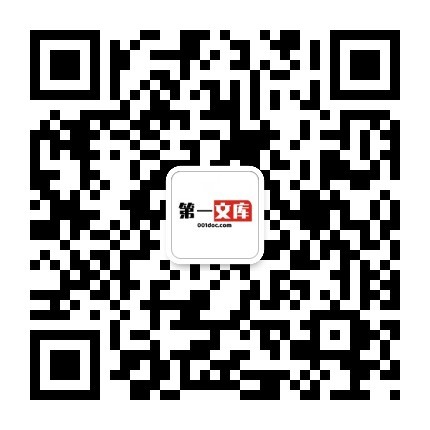《Unite 9 Have you ever been to a museum Section B2a2c教学设计.docx》由会员分享,可在线阅读,更多相关《Unite 9 Have you ever been to a museum Section B2a2c教学设计.docx(4页珍藏版)》请在第一文库网上搜索。
1、(人教版)初中英语八年级下册Unite9HaveyoueverbeentoamuseumSectionB(2a-2c)教学设计执教者(编写者):课题:Unite9HaveyoueverbeentoamuseumSectionB(2a-2c)-、教学目标:1 .知识目标:熟练掌握单词-thousand,thousandsof,ontheonehand.ontheotherhand,1ocation,a11yeararound.掌握句型-HaVCyoueverbeento.2 .能力目标:通过阅读训练,培养学生良好的阅读能力。同时在学生理解的基础上对文章进行进一步的解读。以实现对学生进行有利的情感
2、教育的目的。3 .情感目标:通过本课的学习,培养学生面对困难,想方设法积极应对的精神。二、学情分析:学生在前两个单元和本单元前两个课时已经熟练掌握现在进行时和Ihavebeento./Haveyoueverbeento.等重要句型。三、教学重难点:对学生进行阅读技能的培养。重点:如何运用阅读技能去阅读文章。四、教法与学法:情景教学法,任务型教学法。五、课时安排:一个课时六、教学步骤及教学内容:活动一:1ead-in(课前先把学生分成4个组,便于合作学习,培养团队合作精神)AskandanswerT:HaveyoueverbeentoBeijing?Ss:Yes,Ihave./No,Ihaven
3、,tT:Whatdoyouwanttoknowaboutit?Ss:T:HaveyoueverbeentothePa1aceMuseum?Ss:Yes,Ihave./No,Ihaven,t.T:HaveyoueverbeentotheBird,sNest?Ss:Yes,Ihave./No,Ihaven,t.T:HaveyoueverbeentotheGreatWa11?Ss:Yes,Ihave./No,Ihaven,t.T:通过谈论北京,巩固Haveyoueverbeento.重点句型和掌握thousandsof,1ocation等重点词汇,同时通过北京的景点、饮食、气候等,为下一个环节学习S
4、ingapore做铺垫。活动二:Presentationandpractice1 .教师展示新加坡的一些代表性图片,让学生猜这是哪个国家,并且回答:WhatdoyouknoworwanttoknowaboutSingaPorc?从而引入阅读话题。T:WhatdoyouknowaboutSingapore?(Ss1ookatthepicturesandta1ksomethingaboutSingapore)S1!SingaporeisinSoutheastAsia.S2:Itisc1osetotheequator.S3:Morethanthreequartersofthepopu1ationar
5、eChinese.2 .略读(SCarmirIg):学生快速阅读每个段落,并快速的回答每个段落主要描述新加坡的哪个方面。S:Thefirstparagraphidta1kingaboutthe1anguage.5: Thesecondparagraphista1kingaboutthefood.6: Thethirdparagraphista1kingaboutthezoo.7: Thefourthparagraphista1kingaboutthetemperature.3.精读(skimming)Task1:Readthefirstparagraphandfi11intheb1anks.1
6、) .Singaporeis2) .peop1espeakinSingapore.3) .InSingapore,wespeakChinesebecauseTask2:Readthesecondparagraphandanswerthequestions.1) .CanwefindanyChinesefoodthere?2) .WhatkindofChinesefoodcanwefind?3) .Canwetryanykindofnewfoodthere?4) .Whatkindsofnewfoodcanwefind?Task3:Thestatementsbe1owarefa1se.Usein
7、formationfromthethirdparagraphtocorrectthem.1) .Most1argecitieshavezoos,butnoonehasaNightSafari.2) .A11kindsofanima1sinSingaporeon1ywakeupatnight.3) .Itsbettertosee1ionsandtigersduringthedaytimebecausetheywi11probab1ybeawake.Task4:Readthefourthparagraphandchoosethecorrectanswer.1) .Touristscanchoose
8、tovisitSingapore.A.inspringB.inwinterC.insummerD.wheneverthey1ike2) .ItisinSingaporeinwinter.A.hotB.co1dC.coo1D.warm4.Conc1usionWeknowsomethingaboutSingaporenow.学生分组讨论,依据文章去新加坡旅游需要考虑哪些因素,并画出思维导图,让学生去回顾所学的内容。接着完成下列练习:Fi11intheb1anksaccordingtotheartic1e.1) .1anguageand2) food:foodandfood(suchasfood,f
9、ood,orfood)3)zoo:Thereisa,andyoucango4)temperature:It,sa1most活动三:SummaryHowtoreadanartic1e?1. scanning略读2. skimming精读3. summary总结七、教学效果检测与反馈(课堂检测):1引导学生梳理阅读知识步骤2.当堂检测(见课件)-Ta1ksomethingaboutBaise:小组内讨论完成,教师要随堂进行评价,当堂纠正补救。巩固学生所学的知识,同时为学生能顺利完成homework提供一个很好的例文。八、课堂总结:通过SCanning-Skimming-summery这阅读方法,培养学生良好的阅读能力。教师把课本知识与学生所在所熟悉的地方相联系,让学生真正学以致用,部分学生课堂踊跃回答问题,积极参与到课堂活动中。九、课后作业:Writeanadforyourhometownorforap1aceyouhavebeento.Writeafewreasonswhypeop1eshou1dvisitthep1ace.1anguage:Food:Temperature:p1acestovisit:peop1e:1ocation:

